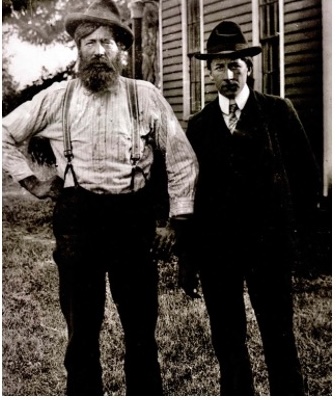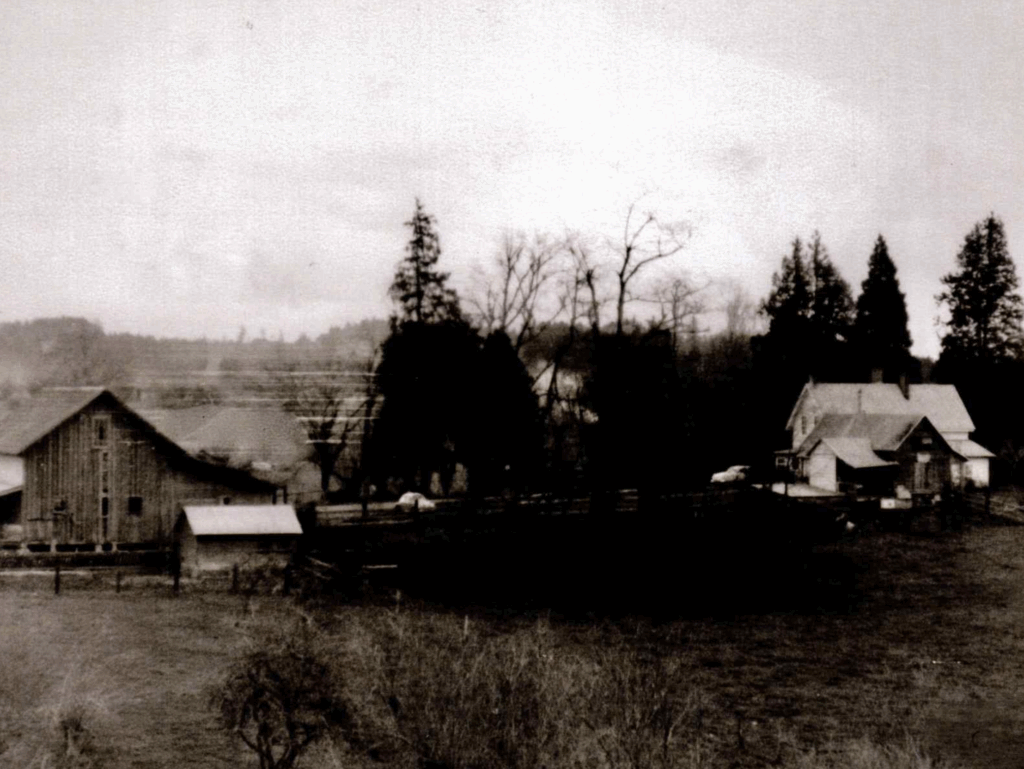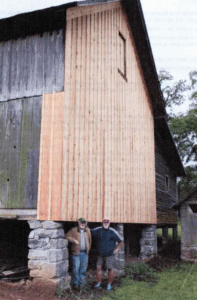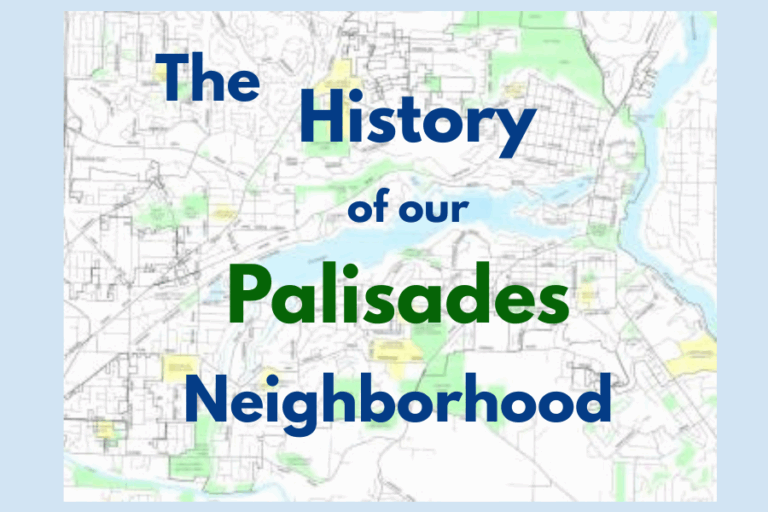But first – a quiz: What distinguishing geological feature of our neighborhood is unique for its type in the world. (Answer at bottom)
Next time you cross the Tualatin River on Stafford Rd, look for the sign saying you’re on “Shipley Bridge”. Our story begins with the 1850 Oregon Donation Land Grant program – where settlers could “earn” the right to claim land (320 acres to single men, 640 to married couples) after 4 years of residency and farm cultivation.
Early settlers arrived via the Oregon Trail, and made their claims. In our neighborhood, one of the first families to purchase land from these initial pioneers was Adam Randolf Shipley, arriving in 1852 having traveled the Oregon Trail from Ohio (Adam’s first wife died on the trail). After his initial acquisition, Shipley purchased additional land resulting in a total of about 1000 acres, from the Tualatin River north to today’s Overlook Rd.
In 1860 Shipley built the barn, then 2 years later the farmhouse that still stands at Stafford Rd. and Atherton Dr. on Rick Cook’s vineyard. Shipley was a wood cutter, later had a stationary/bookstore, and was Portland’s 5th Postmaster. Cultivating up to 45 varieties of grapes was a passion of Shipley’s, who became a leading authority on grape growing and wine making.
Adam and his second wife, Celinda, had a good relationship with the local Kalapuyan Indians. Maude Grims, granddaughter of the Shipley’s, tells the story: “My grandmother Shipley told me many things about their early days and the happenings of the Indians. But, they weren’t afraid of them at all. Grandmother used to tell us about one evening the chief came up from the tribe and he knocked on the door and he said that his wife was very ill. She was in child labor and the chief wanted grandma to come down. And she said, ‘Oh no, I’ll go.’ So she went down and she took care of the mother and baby until it was born and she saved them both. [legend has it that Celinda, upon arriving, told the chief, “This is woman’s work, you can’t come in”] And grandma said that after that they never cut anymore wood. Each morning an Indian came up and cut their wood and piled it.”
Unlike Shipley – drawn to Oregon by land and farming, James Preston Cook (Rick Cook’s great-grandfather) arrived in 1883 to work for Oregon Iron and Steel Co. making charcoal. Cook worked in the iron foundries of southeast Ohio and his expertise was needed by the struggling foundry in present day George Rogers Park. Cook was joined by other Ohioan iron workers including the Wankers (pronounced “Wonk’-ers”) seeking opportunities in Oregon.

After working on the Shipley farm for several years, James and his bride, Susie, purchased the 131-acre farm on June 12, 1900. The Cooks were industrious – raising swine and sheep and serving the small community at the Grange started by the Shipley’s. The Cook farm became a favorite meeting place for neighbors on the 4th of July who cherished Susie’s homemade ice-cream.
James and Susie had one child, William B. Cook, who, at age 36 married Sarah Ethel Baker. Sarah is known to say, “I was born a Baker, married a Cook, and never got out of the kitchen!”. The Cooks continued their family’s farming operations, including growing crops on the clearing in Cook’s Butte, which at that time was part of the Farmstead.


Four of 6 generations of Cooks have now lived in the Shipley-Cook Farmstead and have been noble stewards of this cultural treasure. In 1992, the Farmstead was listed as a Clackamas County Historic Landmark, and in 2008 on the National Register of Historic Places. Rick was able to have the Farmstead designated as a State Century Farm in 2000. According to a report by Lake Oswego’s Historic Resources Advisory Board (HRAB), it is one of only 23 surviving barns in the Willamette Valley built before 1865.

In the next issue: What’s in a name? Stafford, Hazelia, Luscher, Grimms, and more!
Quiz answer: “Of the 14 volcanic vents west of the Willamette River, two of those belong to Cooks Butte. Cooks Butte is a shield volcano, part of the Boring Lava Field, and has been extinct for about 300,000 years. The greater Portland area has the largest volcanic field in an urban area anywhere on the planet. The Boring Lava Field, in geologic terms, is a collection of about 100 vents, cinder cones, and small shield volcanoes…”
A special thanks to Rick Cook for historical and anecdotal information.


